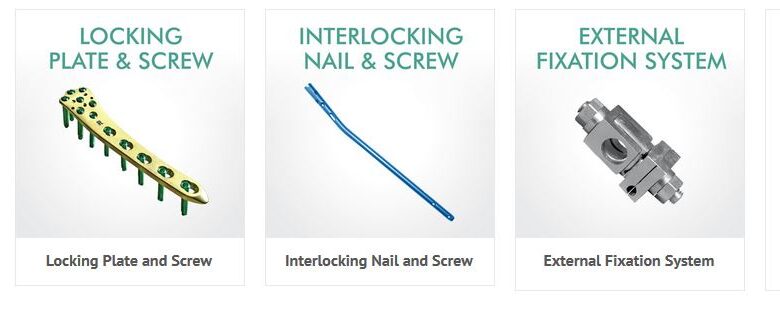How Important Is Material Selection In Trauma Implants?

Trauma implants are a huge relief for people who have faced accident-related and lose mobility. In most of the scenarios, people experience unbearable pain and difficulties. In such a case when the doctors decide that the problem can be solved only using trauma implants surgery where the affected body part is or joint is replaced or augmented using trauma implants. This is where the trauma implants manufacturers come into play. They create replacement supports and joints that transform patients and help them to revert to their normal life. The material of the trauma implants plays a massive role in the success of the surgery. Any defect in the material is said to have a catastrophic consequence on the patient. That is why you have to choose the best material for implants.
What are trauma implants?
The trauma implants are also known as osteosynthetic implants. The implants encompass pins, screws, and plates that are used to surgically fix any bone defect. Since the implants are going to be in constant contact with biological material the material must be strong, sturdy, and long-lasting.
Does the material affect the selection?
The material that is used to manufacture trauma implants is stainless steel or titanium. To select the best material that suits you one has to thoroughly understand the performance attribute that the implants create. The implants are subject to high-reliability standards and performance. The material has to support bone stabilization and healing. In order to do that the material has to meet the following attributes:
- Biocompatibility: The implants should prevent inflammation due to the contamination of bacteria. It should be corrosion-resistant to the action of bodily fluids like blood.
- Low Osseointegration: once the bone is healed the implants should provide room for easy removal without any complications. Therefore the material shouldn’t get integrated strongly with the bone. The removal of implants is highly essential for children.
- Easily gliding: the integrated material should be easy enough for the tendons to glide over smoothly. If the implant is not smooth, it might damage the tendons.
- High tensile strength: the trauma implants are subjected to considerable tensile and bending loads. If the implants are not strong enough to withstand the heavy loads the chances of breakage and damage are high.
- Low degree of elasticity: the implants must have a certain amount of elasticity in order to reduce the amount of stress shielding. The implant should be able to support the bone. At the same time, it shouldn’t absorb the entire load. If the implant has high-stress shielding it can lead to bone atrophy.
- Ductility must be high: the ductility of the material is highly essential so that the contours of the material can adapt to the contours of bone before implantation.
- Non-magnetic: the material of the implant has to be non-magnetic and this is a no brainer as magnetic materials expose the patients to high risk.
Stainless steel and titanium meet all the attributes and perform well in the biological environment. Titanium alloy is also used to meet the performance requirement of trauma implants. It is ductile, has high tensile strength, and is corrosion-resistant.
The expertise of orthopedic trauma implants
The orthopedic trauma implants are placed inside the body by surgery. The surgery is performed by specialized surgeons. But for prompt healing and effective recovery, the design and the quality of the implants should be compatible with the body. And this can be achieved only by expert manufacturers who have years of experience and a complete understanding of the implants. We at MJ Surgical are providing top-notch implants of various ranges for years and are best trusted for our quality. For first-class implants give a call to us now.





